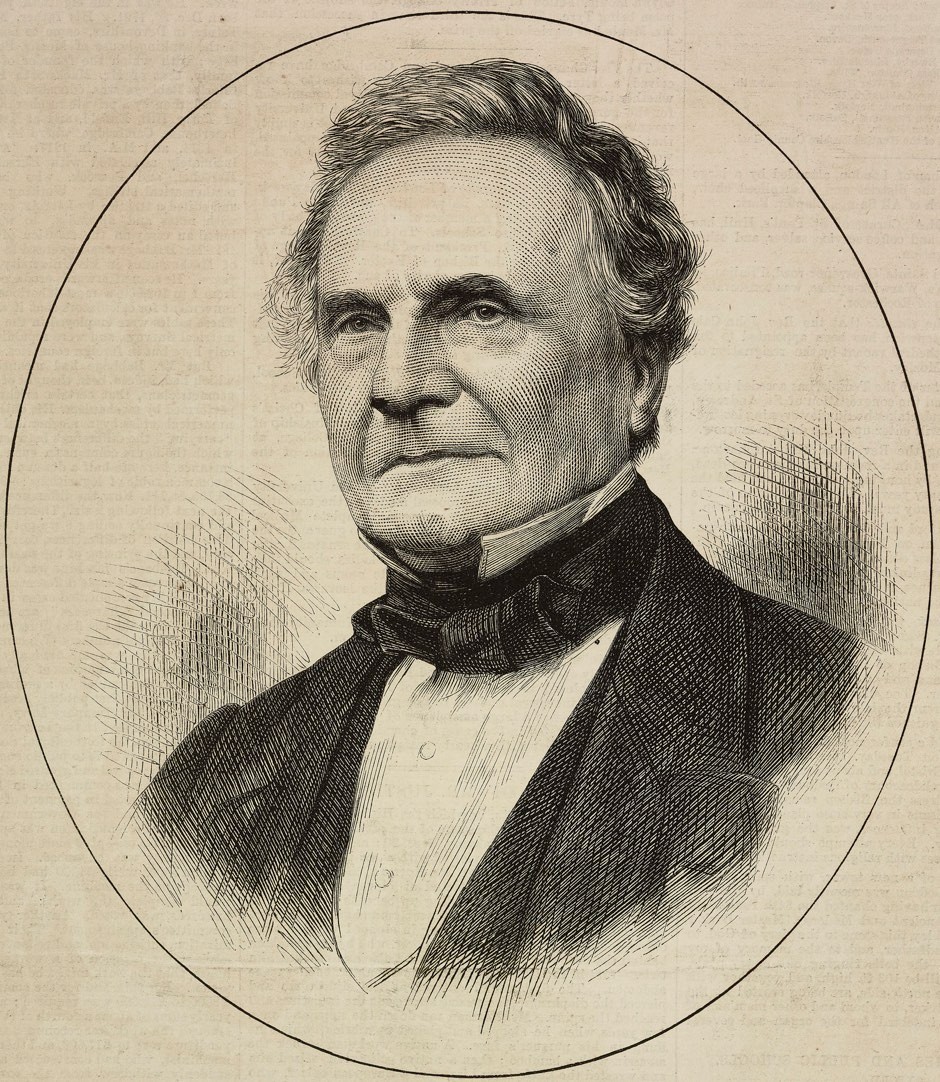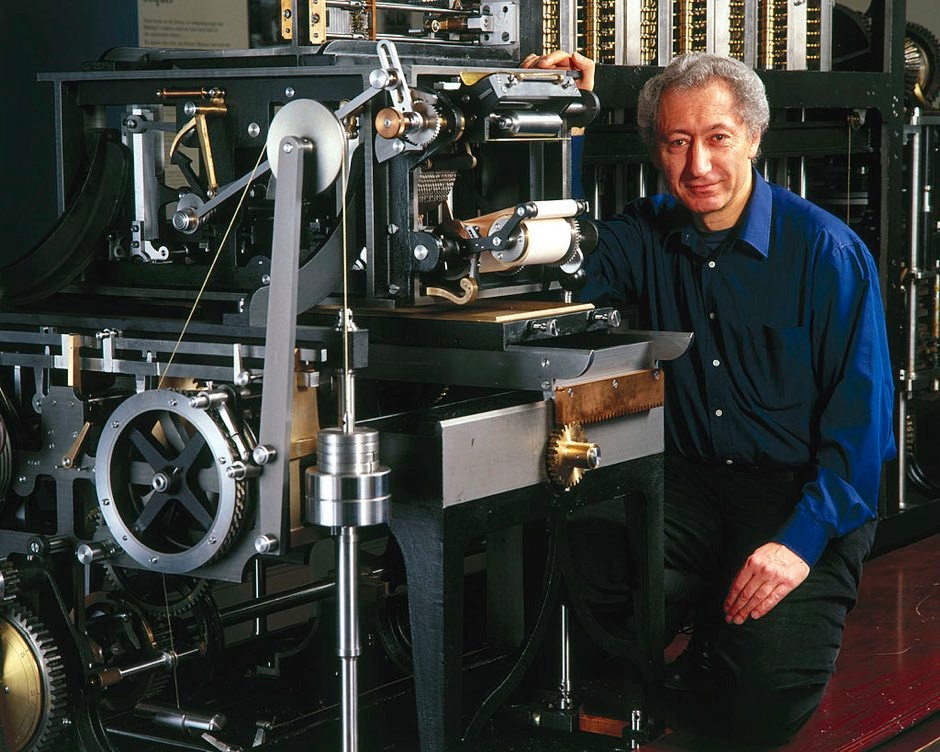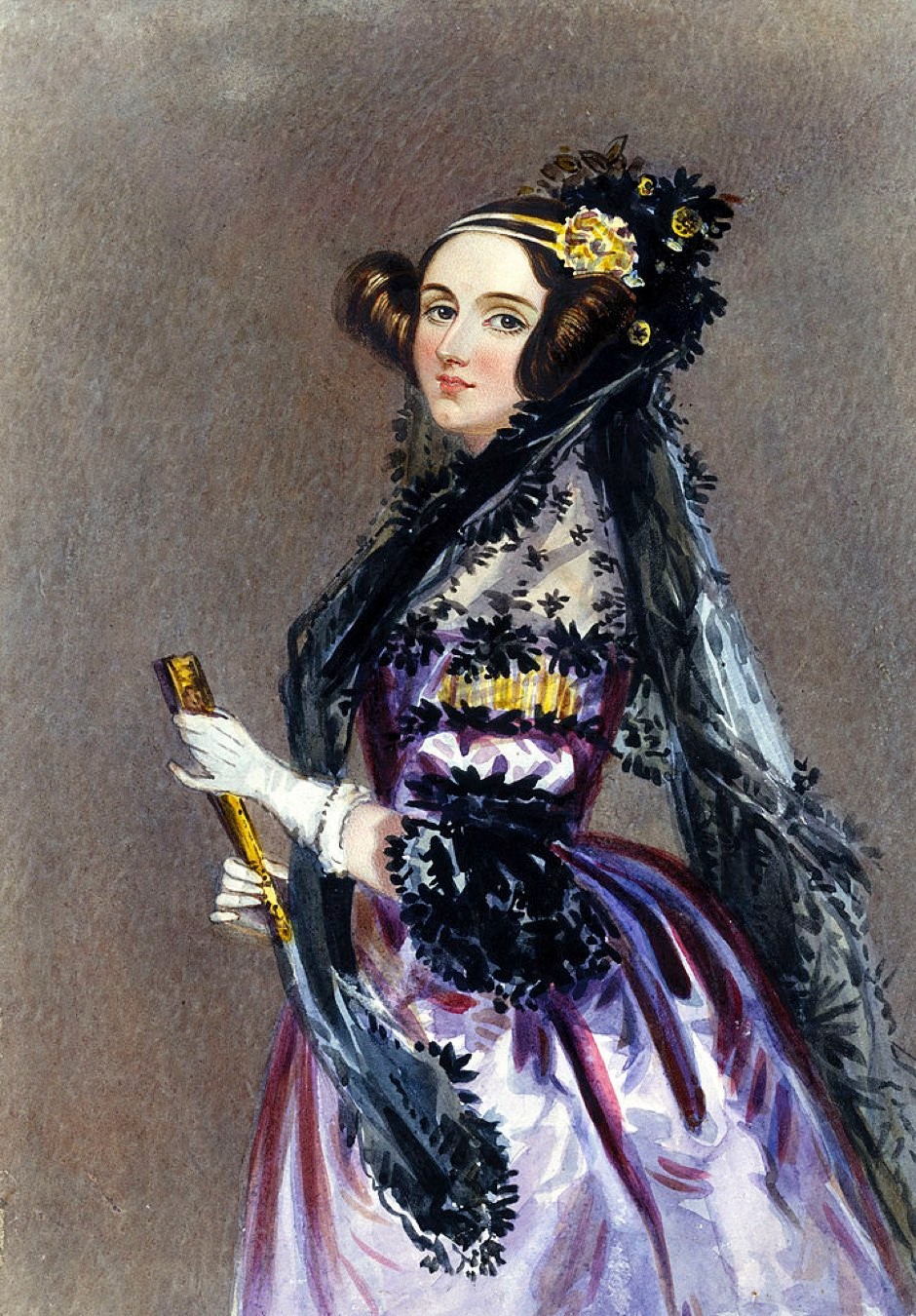Once you get to know about Ada Lovelace (1815-1852) and her life and work, it’s difficult not to become more or less obsessed with her. She was a truly remarkable woman; unquestionably one of the most important women in science history.
She was born in 1815, the daughter to Lord Byron and Lady Byron, who were married for just a year – when Ada only five weeks old Lady Byron left her lord and never saw him again. They eventually separated and Byron died in 1824.
When Ada was born her parents were extremely poor; one of the reasons for the separation was that Lady Byron could no longer stand the stress of bailiffs regularly knocking on the door and in some cases camping out in the front room.
But, curiously enough, Byron was poverty-stricken by choice; he had a strange, almost neurotic belief, that he shouldn’t make money from his poetry even though he was highly successful at it and his poems were all best-sellers.
On one occasion, for example, he gave a thousand guineas to his publisher John Murray as a gift, a sum worth about £100,000 back in the early 19th Century. I don’t think many writers would do that nowadays.
When Ada was a girl, her mother inherited a substantial fortune and for the rest of Lady Byron’s life she was one of the wealthiest women in Britain, owning, for example, numerous coal mines in the north of England.
Lady Byron was herself obsessed with the idea that if she didn’t educate Ada properly, Ada’s mind might, as Lady Byron perceived it, go to ruin like Lord Byron’s had.
Lady Byron believed that if she could tame Ada’s imagination, this would prevent Ada from going down the line of imaginative self-indulgence that Byron himself had, as she saw it, gone down.
Lady Byron set out to use mathematics as the method of taming Ada’s imagination, figuring that if she could arrange for Ada to educated in mathematics above all, the taming of the girl’s imagination would be successful.
Ironically, what actually happened was that Ada fell head over heels in love with mathematics. While she never became a great mathematician – my research suggests that she reached about the standard of about a third-year university graduate by modern standards – that was no trivial feat for a girl in the early 19th Century, who was being educated at home by governesses and tutors who regularly were changed because Lady Byron tended to fall out with them as with most other people.

Lovelace as a child © Getty Images.
Ada eventually evolved a kind of personal philosophy which she called, to use her own words, ‘poetical science’.
She never defined precisely what she meant by that but it’s clear that Ada saw poetical science as a dynamic combination of science and the imagination. So, far from quelling Ada’s imagination, Lady Byron succeeded simply in transforming it into something else.
Posterity should be grateful for the something else into which Ada’s imagination was transformed. It is this that really explains my own personal obsession with Ada Lovelace, which derives from her professional brilliance, although I would certainly have liked to have met her too.
Augusta Ada King, Countess of Lovelace’s life was unfortunately short: she was born on 10 December 1815 and passed away on 27 November 1852 from an unfortunately and tragically very painful uterine cancer, at a time when the only palliative available to lessen her pain was laudanum.
This was a mixture of brandy and morphine, which had only limited effect as it was taken orally and much of it was broken down by stomach acid: the hypodermic syringe would invented in 1853, a year after her death.
Ada packed a great deal into those 36 years.
Lovelace and Babbage
She was initially educated by those governesses and tutors for as long, or as short, as they were employed by Lady Byron. Then, when Ada was only 17 years old, and on the evening of 5 June 1833, she met a man who would become arguably her most important friend.
His name was Charles Babbage. He was 24 years older than her, and she very quickly became fascinated, after talking to him, with his plans for building a calculating machine called a ‘Difference Engine’. The purpose of this, although Babbage never managed to complete it, was to calculate mathematical tables automatically without error.
In today’s world, with our instant access to calculation on our computers, mobile phones, our watches and on many other devices, we don’t regard accurate calculation as something especially important. More to the point, perhaps, we quite rightly regard it as a done deal, which indeed it is.
But that certainly wasn’t the case in Ada and Babbage’s days. Then, complex calculations could only be completed by referring to tables of logarithms or trigonometrical functions, unless the person wanting to make the calculation was willing to spend hours on the most complex mental arithmetic.
So these mathematical tables were an important consumer product in the 19th Century. They were compiled by clerks who, ironically, were actually called ‘computers’: it’s not generally realised that that the word used so regularly today actually meant a person in the 18th and 19th Centuries.

Charles Babbage © Getty Images.
These clerks were remarkably expert at mental arithmetic, and to be honest one of the most remarkable aspects of their work was how often they got it right.
But the problem was that, even if they got it right most of the time, they sometimes made mistakes and this led to the dire situation that one never knew where the mistakes might be.
John Herschel, son of astronomer William Herschel, one of Babbage’s closest friends, and a mathematician himself, once observed that the problem with the errors which cropped up in mathematical tables was that they were like, as he put it, ‘sunken rocks at sea’: you never knew when they were going to crop up.
Babbage himself was working with Herschel in the summer of 1821 at Babbage’s then London house at 5 Devonshire Street, carrying out some voluntary work for the London offices of the Astronomical Society of London, now known as the Royal Astronomical Society.
That summer, Babbage and Herschel had joined a committee responsible for providing the Astronomical Society with calculations that could be used for compiling mathematical tables.
Babbage and Herschel were checking other people’s working, a job which they found, not surprisingly, ultra-laborious and full. A significant problem was that when they found an error, or thought they had, they had no way of knowing whether they might have made a mistake themselves in their working or if the human computer pad: as Babbage later recalled:
Mr Herschel and myself having been appointed by the Astronomical Society on a committee for the purpose of procuring certain calculations, we first agreed on the proper formulae, and then employed two independent computers to reduce them to numbers, ourselves comparing the manuscript results.
On the first of these occasions my friend [Herschel] brought with him the calculations of both computers, and we commenced the tedious process of verification. After a time many discrepancies occurred, and at one point these discordances were so numerous that I exclaimed, ‘I wish to God these calculations had been executed by steam!’
This was an epiphany for Babbage and he devoted much of the rest of his life trying to build a steam-powered calculating machine that would do precisely that.
He was fortunately extremely rich: when his banker father Benjamin Babbage died in 1827, Benjamin left his only son a fortune worth about £100,000 in 1827, which is equivalent to about £10 million today.
This legacy kept Charles Babbage financially secure for the rest of his life. Babbage spent much of his own money on his calculating machine ambitions, although he realised that he would never have enough to build the most ambitious of the machines he had designed.
This was called the Analytical Engine and was an extremely remarkable idea. Babbage planned it out in suitable detail, though it is currently arguable whether his plans, which are being studied by a modern team to see if an Analytical Engine could be built today, did leave enough information for a machine to be realised in a modern reincarnation.
But certainly the Analytical Engine was the world’s first digital computer, having a store, a processor, a memory, a sub-routing function and all the other essential features of a modern digital computer.
One of the problems was that Babbage abandoned his work on the Difference Engine – for which the British Government had paid £17,000, which was approximately the cost of two major naval warships.
In fact, it is known today that Babbage could indeed have completed the machine. A modern project to build a full-size Difference Engine, and the printing mechanism Babbage also designed to go with it, was successfully completed in the year 2000, the calculation part of the machine having been completed in 1991.
The modern project, under the leadership of museum curator Doron Swade, took care not to use any materials or levels of precision to which Babbage would not himself have had access.

Doron Swade with the completed printing mechanism © Getty Images.
But Babbage did indeed abandon his work on the Difference Engine, although not before leaving behind plans for the device built by Swade and his team, which he called Difference Engine Number Two.
He abandoned the Difference Engine because he fell in love with the idea of building a much more complex machine which the Analytical Engine would have been.
Babbage was ingenuous enough, when he met with British Prime Minister Sir Robert Peel on 11 November 1842 to tell Peel he had abandoned the Difference Engine because the Analytical Engine was much more interesting and would be much more useful. This, naturally, didn’t impress Peel, let alone make him want to advance any more money to Babbage.
As he pointed out to Babbage, reasonably enough, during the interview, Babbage had been given £17,000 to build a machine which he had not completed and now wanted more from the government without any assurance that the Analytical Engine would be completed either.
Babbage’s attitude towards things like finance, diplomacy and government was ultimately the reason why Ada herself believed she could make a substantial, possibly decisive, contribution to his work.
She knew that he was a genius in designing and planning machines but she also knew that he was hopeless at dealing with influential people and in effect being what in modern terms we would describe as a salesperson of the product.
There is an analogy, for example, with the hugely successful organisation Apple, where Steve Wozniak was to some extent the back-room boffin and the late Steve Jobs went out into the world to sell the product. Babbage desperately needed a Steve Jobs, but tragically he didn’t realise this.
The first computer programmer
The late 19th Century was not a good time to be alive if you wanted to find men blessed with humility and a sense of the contribution women could make to their success.
Nowadays we take for granted that women are just as skilled as men at many tasks, and women quite rightly play major roles in all kinds of organisations, not only in the front office but also the back office.
But Babbage had the most ridiculous and old-fashioned attitude towards women, even to Ada who was a close friend of his. He never saw her as anything more than, as he put it in his own words, ‘interpretress’ of his work, meaning that he was happy for her to write articles about what he was trying to do but the idea of her helping him to make it all happen was anathema to him.
Ada did her best and a wonderful essay she wrote about the Analytical Engine is justly regarded as one of the most important documents in what Swade calls the ‘prehistory’ of a computer.

Ada Lovelace in 1840 © Getty Images.
Ada’s essay, which is known in the computer history fraternity as her ‘Notes’ is extremely readable and gives numerous insights of her own into the Analytical Engine and its potential.
It is absolutely clear that Ada Lovelace saw the Analytical Engine, quite rightly as a general-purpose machine which could be used to carry out not only mathematical calculations, but a wide range of other functions including even, as she saw, being able to compose music.
This, of course, is exactly how we use computers today and it is a tragedy that Babbage did not accept an extremely important proposal which Ada made to him on 14 August 1843 in a letter of more than 2,000 words, in which she offered to be in effect the public face of the machine and to discuss Babbage plans and the need for finance with influential people.
Babbage tersely rejected her offer the following day, on 15 August 1843, and the computer evolution had to wait for a century before it finally took place.
Strangely enough, even after Ada’s help was rejected, she remained friendly with Babbage, and he was a great help to her when she was ill, becoming the executor of her will, although eventually Lady Byron, who had never liked Babbage much, banned him from visiting Ada during her final illness.
Postface: James Essinger’s comments for UX Magazine readers
In addition to my new book mentioned above, Charles and Ada: The Computer’s Most Passionate Partnership, my obsession with Ada Lovelace has also led to my biography of Ada, Ada’s Algorithm, which was published in the UK in 2013 and in the US in 2014, and which has as well as this been published in Spanish-language and Finnish-language editions.
My novel-in-progress, The Ada Lovelace Project, is a result of the same obsession. As of December 2019, I have nearly finished this book, which when it’s completed will be about 170,000 words long. It’s an ambitious historical novel, designed to immerse the reader in a world-changing adventure that takes place in 1843 and which has science-fiction elements, though these are throttled back compared to the historical aspects. It’s about a woman called Lucy who comes back from the year 2095 to 1843 to meet Charles Dickens, polymath Charles Babbage and Lord Byron’s daughter Ada Lovelace. Lucy becomes the closest of friends with Ada, and works with her to try to make an 1840s computer revolution that never actually happened, happen. Lucy knows that if she and Ada can’t make the computer revolution take place, Lucy’s future world, a matriarchal one run by highly effective and efficient women – known as ‘Fems’ – will never exist, as that world depended on the 1843 high-tech revolution happening. But gradually, and partly influenced by being surprised in 1843 by Sebastian Dunn, the head of the Male Liberation League, who has also managed to travel back to 1843 from 2095, Lucy realises that the world of the Fems was not as perfect as she believed.
As well as being a writer, I also run a publishing firm called The Conrad Press, which publishes novels, general narrative non-fiction, memoirs, poetry collections, plays and screenplays. We are by the way always looking for new writers. We have writers in the UK, the US, Australia and Italy.
One of The Conrad Press’s writers is Shanee Edwards, a screenwriter and journalist based in the US. Shanee’s own fascination with Ada Lovelace has itself resulted in a novel entitled Ada Lovelace, the Countess who Dreamed in Numbers, which was published by The Conrad Press on March 1 2019.
The fascination which Ada Lovelace inspires in posterity seems destined to continue indefinitely…







